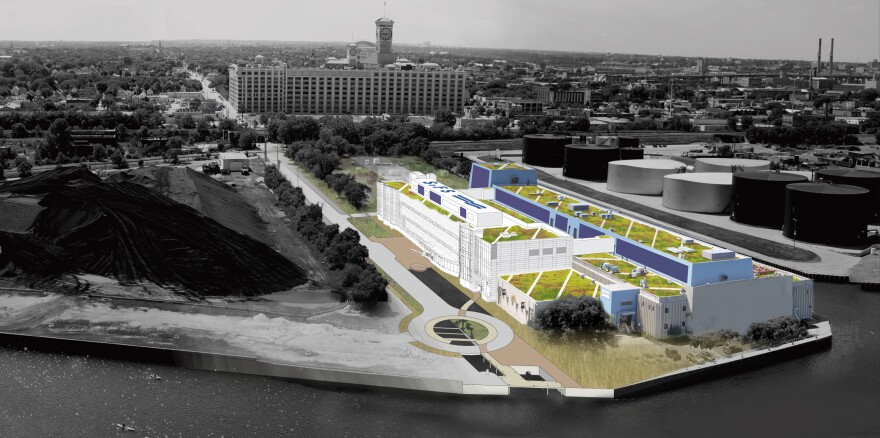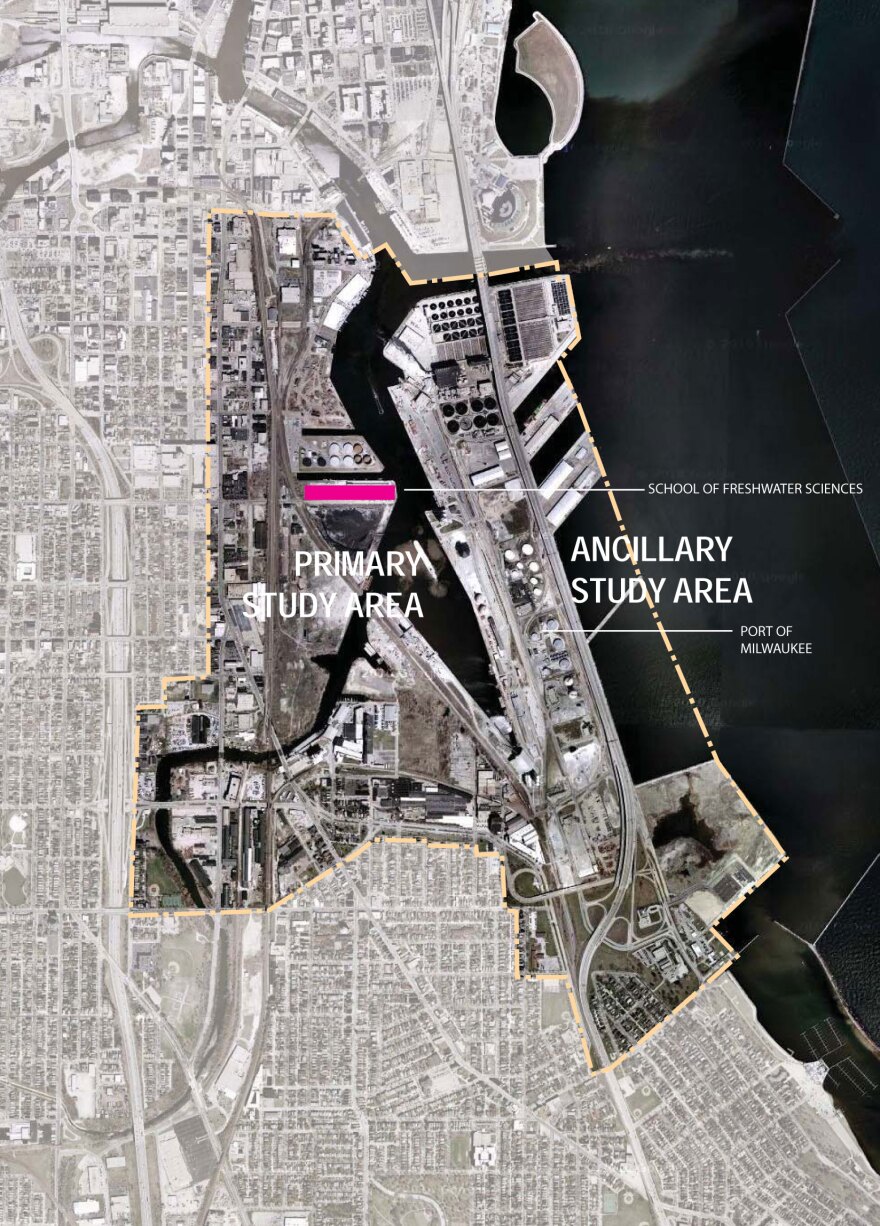
A crowd gathered Tuesday in a small plaza where the Milwaukee and Menomonee Rivers meet to celebrate the city's first sustainability plan.Sustainability director Matt Howard says work is already underway to fulfill a 10-year road map designed to handle environmental challenges, while improving neighborhoods and creating jobs.
Eight targeted issues provide its framework, but planners want to demonstrate results, through two initiatives. They are – reinvigorating Milwaukee’s inner harbor, and the other, revitalizing neighborhood with food production as a centerpiece.
Marcia Caton Campbell says the Lindsay Heights neighborhood has a head start on the food-producing /entrepreneurial cultivating initiative – or what the city’s new plan calls HOME GR/OWN.
“We’re guests here in Alice’s Garden this morning and it is a beautiful setting, an example of ...food producing and community building initiative. It’s in its third full season since its transformation. And as you can see the landscape is extraordinary. There are one hundred plus households here gardening, growing food for their families,” Caton Campbell says.
Organizers also weave in nutrition classes along with mentorships.
“There is an Alice’s Garden farmer training project that is providing job training and ultimately job creation,” Caton Campbell says.
However, HOME GR/OWN sets out to do even more. Its goals include helping homeowners install energy efficiencies and transforming vacant buildings into neighborhood resource centers.
Based on sheer numbers Caton Campbell provides, the sky’s the limit.
“Right now the city owns approximately 900 foreclosed homes and 2700 vacant lots and most of these are concentrated in lower income neighborhoods,” Caton Campbell says.
Caton Campbell served on the Green Team that crafted ReFresh Milwaukee. She’s an urban planner.

Another team member was Peter McAvoy. He suggested meeting on rooftop in Walker’s Point, so we could gaze on Milwaukee’s inner harbor, while he described goals for the city’s watery border.
“We are going to deal with transportation: rail, shipping, biking, hiking as well as the kinds of buildings; they would be state of the art buildings, energy efficient; they would be making a statement this city is really on the cutting edge,” McAvoy says.
McAvoy mentions the potential of one parcel, now covered by a giant pile of coal.
“It’s right across the street from the new School of Freshwater Sciences. And that could be an important parcel of land that could be restored and redeveloped in a way that would be compatible with the new school,” McAvoy says.
We spot a former warehouse a hop away. Its owner did not wait for Milwaukee’s new sustainability initiatives to click into action.
Jim McCabe repurposed the building in Walker’s Point. Now it’s home to his Milwaukee Brewery Company.
“Part of the ethos of the company is sustainable manufacturing concept, a lot of the equipment in here is repurposed, not just from other breweries but also from other industries in the area,” McCabe says.
He created it, years after first coming to town from out east to study engineering. McCabe then coordinated environmental projects around the U.S. McCabe was drawn back to Milwaukee and to beer crafting.
He holds great hope for ReFresh Milwaukee.
“There are people in Milwaukee there are people who are interested in moving the needle and that’s going to keep young talent in Milwaukee, and attract young talent to come to a city where cool things are happening; and the right things are happening,” McCabe says.
Greg Bell hopes McCabe’s prediction bears fruit, but sees a potential wrinkle. Bell served on the city’s first Green Team.
“I think one of our pitfalls is that we tend to be a community with lots of people doing lots of good things....” Bell says.
....but that does not always work collectively.
“If we don’t find ways to begin to work collectively, then we’re dissipating our energies, so I’m hoping we can find ways to bridge those gaps,” Bell says.
Refreshing a city – and sustaining improvements, require a long-term, all-in commitment.






